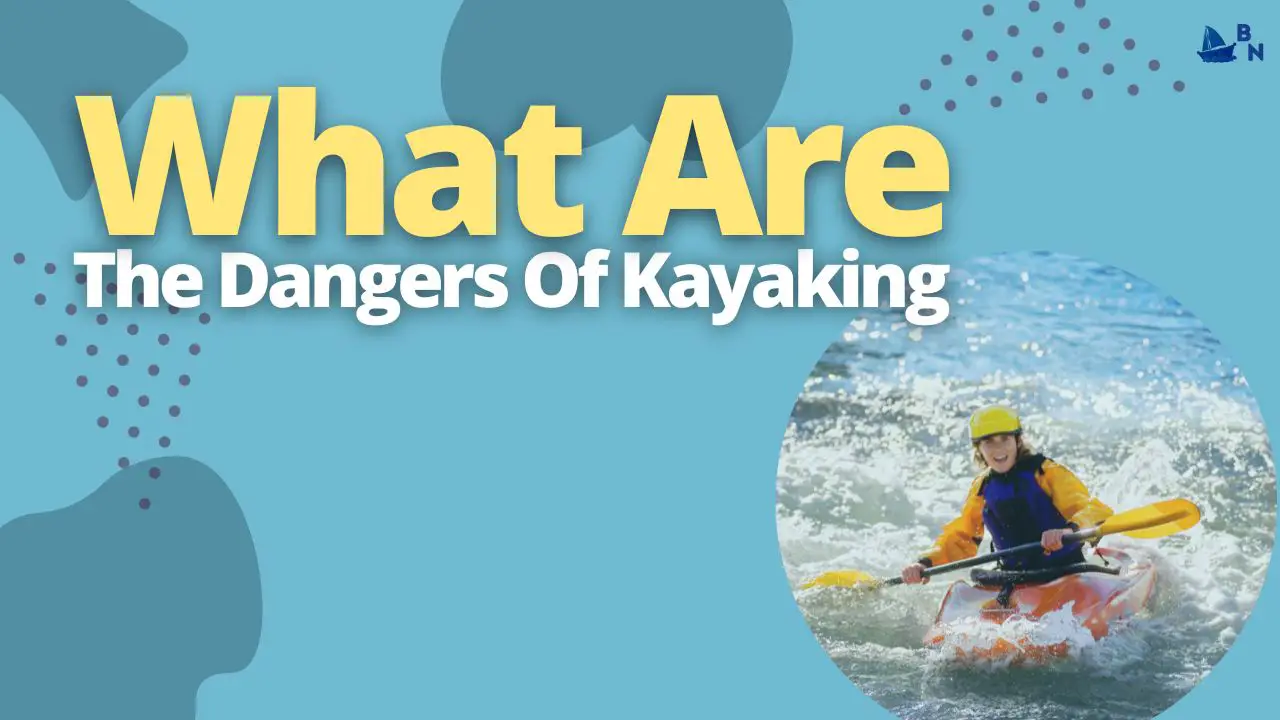Kayaking is dangerous because it exposes you to the elements, and there is a risk of capsizing or hitting rocks. You must be aware of your surroundings and have the proper safety gear to protect yourself.
Key Takeaway’s
- Kayaking can be dangerous if you don’t know what you’re doing.
- There are many different types of kayaks, each with its own set of dangers.
- Whitewater kayaking is one of the most dangerous types of kayaking.
- Sea kayaking can also be dangerous, especially if you’re not prepared for the conditions.
- Always make sure you’re aware of the dangers before you go kayaking.
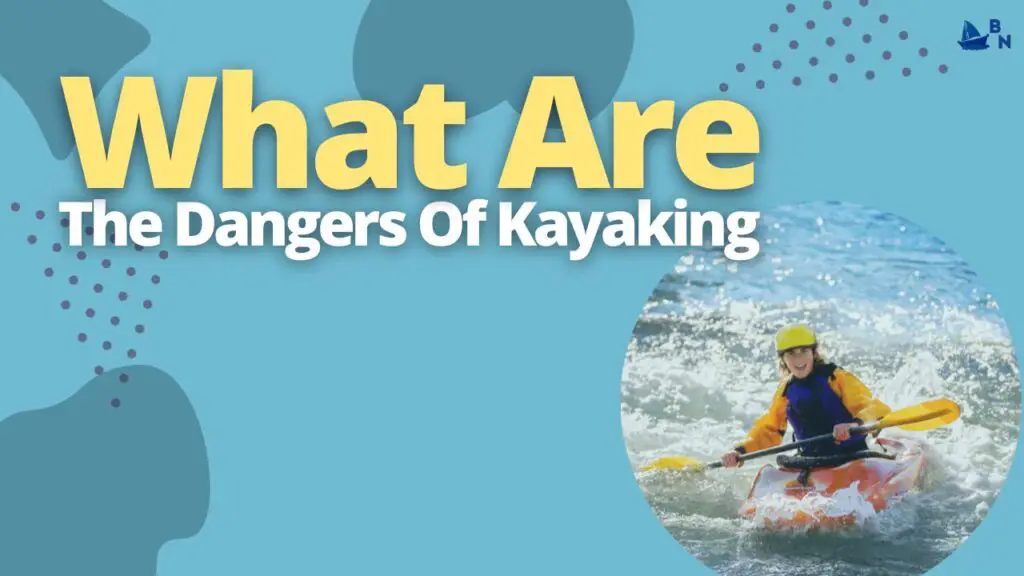
Here’s The Answer To What Are The Dangers Of Kayaking
People should be aware of the many dangers of kayaking before they embark on this exciting activity. The first danger is the risk of capsizing.
A kayak can capsize if it is hit by a large wave or collides with another object, such as a boat. When a kayak capsizes, the paddler can be thrown into the water and may be at risk of drowning.
Another danger of kayaking is the risk of being swept away by currents. Strong currents can quickly carry a kayaker away from shore and can be very difficult to paddle against. This can lead to exhaustion and even drowning.
While many dangers are associated with kayaking, these risks can be minimized by taking proper safety precautions and being aware of the potential hazards.
With proper preparation and common sense, kayaking can be safe and enjoyable for everyone involved.
Drowning Is The Most Common Danger Of Kayaking
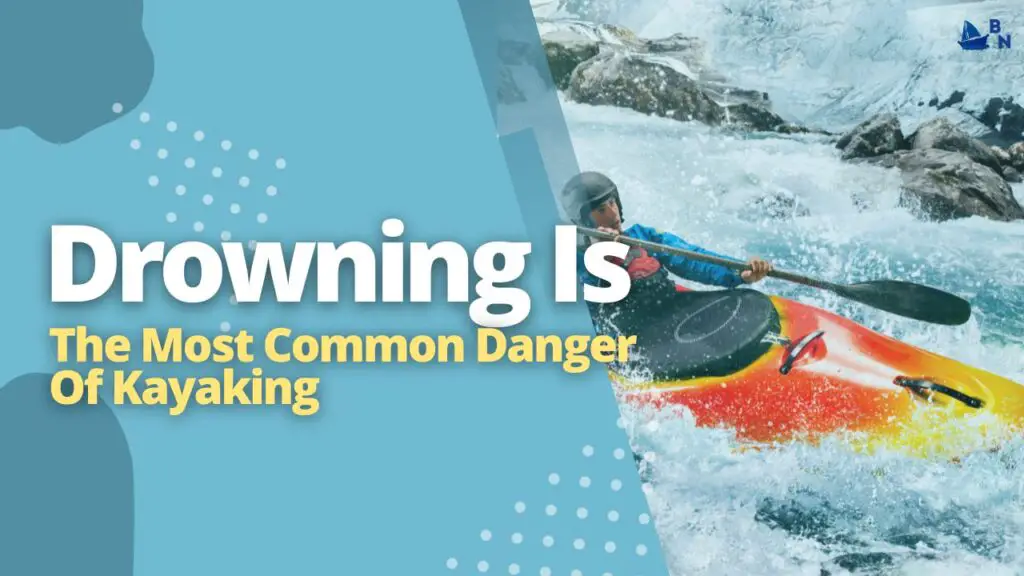
Drowning is the most common danger of kayaking, so it is important to be aware of your surroundings and know how to rescue someone drowning.
The first step to prevent drowning is not going out on the water without a life jacket. If you fall in the water, don’t panic and swim towards the shore; instead, try floating with your back facing up until help arrives.
If swimming to shore is your only choice, make sure you are close enough so that someone can reach down and pull you out or throw something buoyant (like a life preserver or board).
Once safe on land again, find comfort in knowing that this situation will not happen again because now everyone knows how dangerous it is.
Hypothermia Is A Major Danger In Colder Waters
- Hypothermia is the biggest danger in cold-water kayaking.
- It can happen to anyone, even those who are fit and prepared.
- The best way to prevent hypothermia is by wearing the right clothing and equipment and knowing how to recognize early signs of it and how to treat it quickly if it does occur.
Paddle Entrapment Can Occur If You Get Caught On Something Underwater
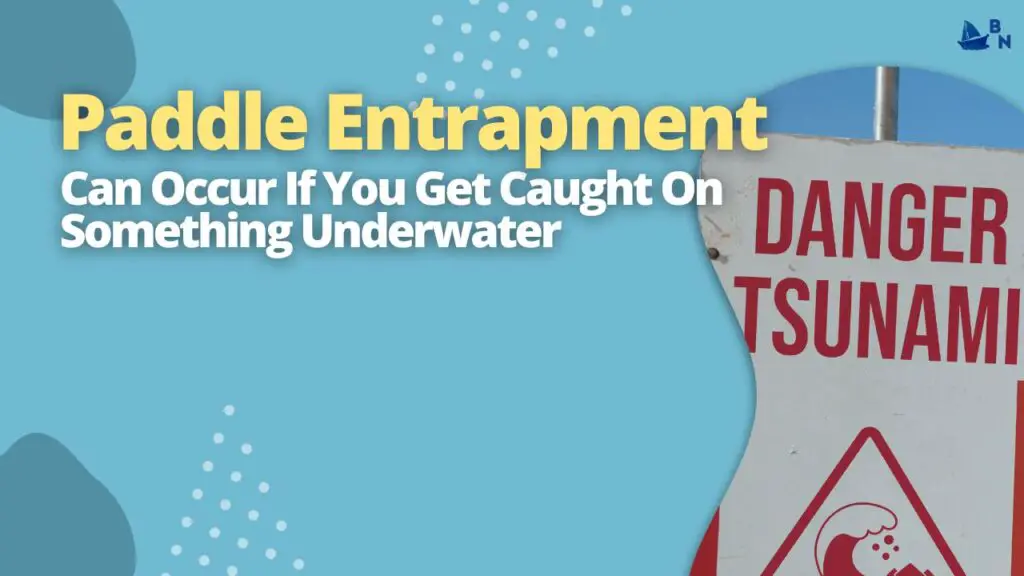
The last thing you want to do while kayaking is get your paddle caught in something underwater.
This is called paddle entrapment, and it can happen if you’re paddling through a shallow area or near a rock shelf that extends above the water’s surface.
The most common cause of paddle entrapment is when your paddle hits an object on the bottom of the river or lake and gets stuck under it.
If this happens, try to pull it out immediately—if you wait too long, then there’s a chance that your blade will become entangled in debris and sand, which could lead to more serious problems like injury or death (not fun).
Getting Hit By A Boat Is A Major Hazard
It’s not just the boats that are dangerous, though. You should know about the dangers of kayaking itself.
- You can get injured by rocks or other hazards.
- You could fall out of your boat and drown.
- You could be hit by another boat (see above).
Many Things Can Fall Out Of Your Kayak And Injure You
Kayaking can be a great way to see the river or lake, but it’s important to be aware of all the things that can fall out of your kayak and injure you.
Kayaks are often filled with water, which means that anything floating in it—from leaves and branches to rubbish and unwanted objects—can end up in your kayak when you’re paddling.
Suppose something falls into your kayak while on the water, don’t try to grab it or push it back out. Instead, paddle as fast as possible toward shore (or another safe location).
Weather Conditions Can Present Dangers While Kayaking
The weather conditions you can encounter while kayaking is the same as anyone else would experience.
Wind, rain, snow, and ice are common issues for paddlers in winter. This is something to think about before leaving if you intend to embark on a lengthy voyage in open water.
The wind will increase the level of physical exertion required to progress against it and the drag on your boat, which could make it difficult to keep up with friends or family members traveling at different speeds.
Lightning strikes can be another danger when kayaking.
What Are The Dangers Of Kayaking In Whitewater?
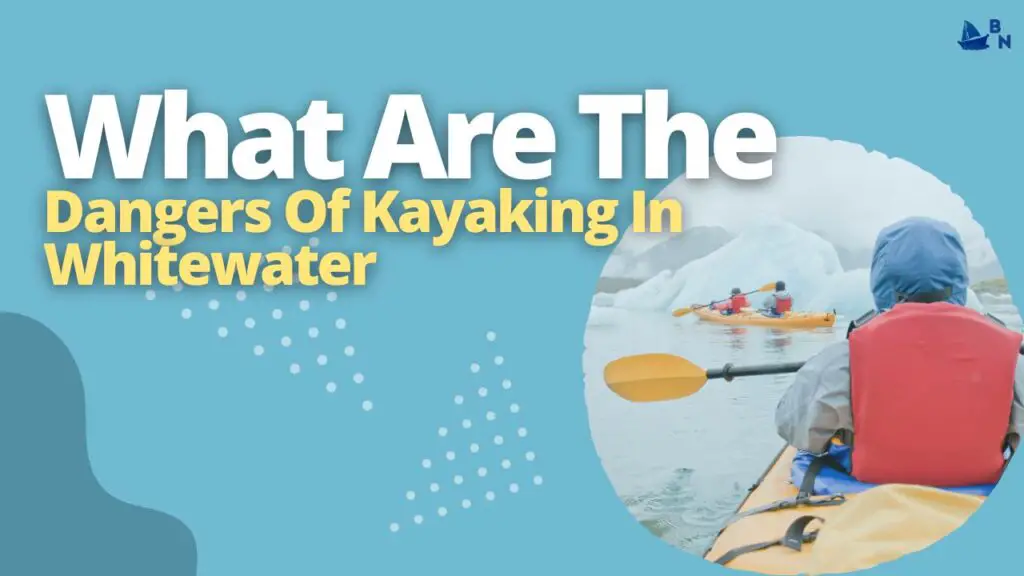
Whitewater kayaking can be dangerous because of rapids that flip your boat over or other dangers like rocks under water which could puncture your boat’s hull and cause it to sink quickly.
If you decide that this is an activity you want to try out on your own or with friends, then make sure everyone knows how important safety precautions are before heading out onto any river near them!
What Are The Dangers Of Kayaking In Open Water?
Open water dangers are not as obvious as whitewater dangers. A kayaker may be able to paddle through a rapid or class IV rapids unscathed, only to succumb to hypothermia and dehydration when they come out on the other side.
In open water, it’s important to keep an eye on your watch and know how long you’ve been out on the water.
If you’re paddling for just one hour, you should still drink plenty of fluids (water is best).
But if you’re planning on being out for several hours or even all day, you need more calories and electrolytes like salt.
What Are The Dangers Of Kayaking Alone?
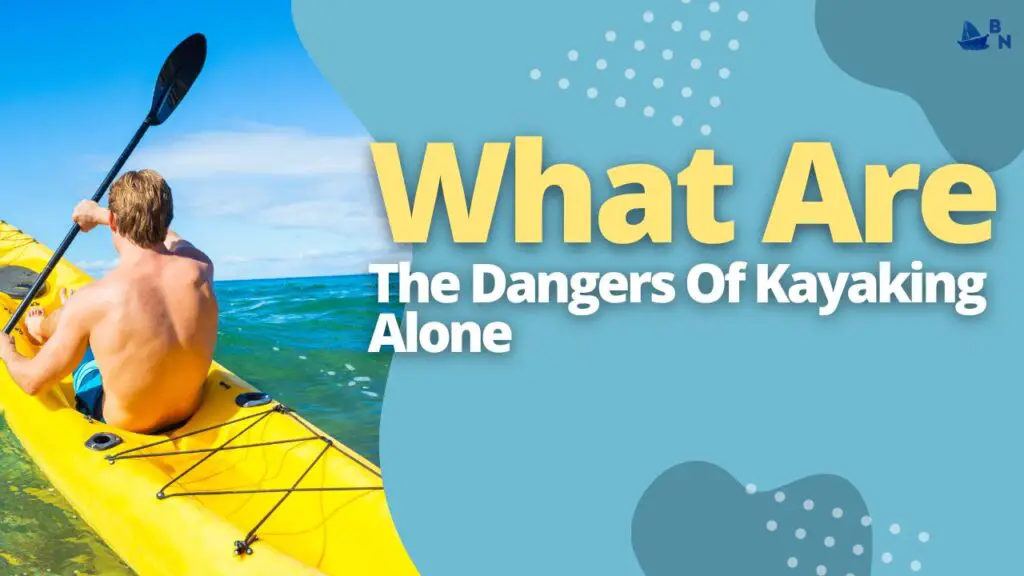
If you have a kayak, it’s tempting to go out on the water alone. After all, what could happen? The problem with this is that when things go wrong on the water, they can go wrong—and fast.
If something happens while you’re on your own in the wilderness and you are injured or lost, it may be hard to get help.
Without another person around, there’s no one there to call 911 or summon help from other boaters/rescuers/locals if needed. If your boat is damaged or sunken in deep waters and you don’t know how to swim well enough for survival (which most people don’t).
In Short
The dangers of kayaking include capsizing, getting hit by waves or other kayakers, and being trapped under the kayak.
Capsizing is the most common danger and can happen when a kayaker gets too close to shore, turns too quickly, or doesn’t have enough weight in the kayak.
Getting hit by waves or other kayakers can also be dangerous, and being trapped under a kayak can lead to drowning.

